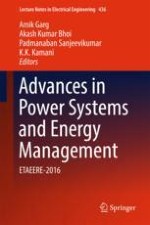2018 | OriginalPaper | Buchkapitel
Design and Analysis of Ultra-Low Power QCA Parity Generator Circuit
verfasst von : Trailokya Nath Sasamal, Ashutosh Kumar Singh, Umesh Ghanekar
Erschienen in: Advances in Power Systems and Energy Management
Verlag: Springer Singapore
Aktivieren Sie unsere intelligente Suche, um passende Fachinhalte oder Patente zu finden.
Wählen Sie Textabschnitte aus um mit Künstlicher Intelligenz passenden Patente zu finden. powered by
Markieren Sie Textabschnitte, um KI-gestützt weitere passende Inhalte zu finden. powered by
